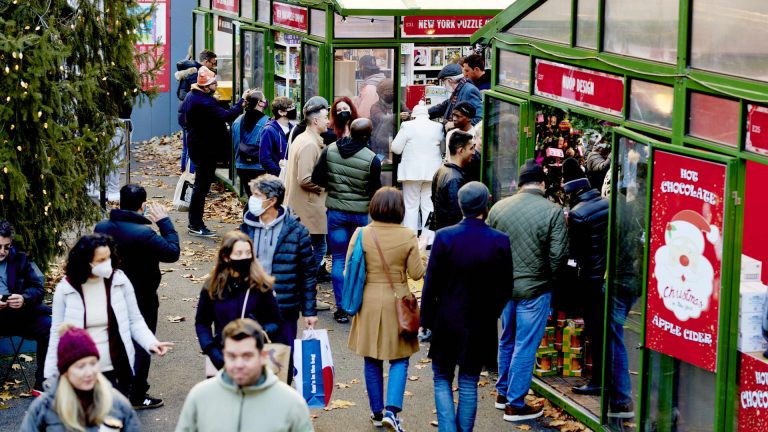
[ad_1]
Shoppers walk through the Urbanspace Holiday Shops at Bryant Park in New York, U.S., on Sunday, Dec. 12, 2021.
Gabby Jones | Bloomberg | Getty Images
Holiday sales came in below industry expectations, as shoppers felt pinched by inflation and rising interest rates, according to data from the National Retail Federation.
Sales during November and December grew 5.3% year over year to $936.3 billion, below the major trade group’s prediction for growth of between 6% and 8% over the year prior. In early November, NRF had projected spending of between $942.6 billion and $960.4 billion.
The retail sales number excludes spending at automobile dealers, gasoline stations and restaurants, and is based on data from the U.S. Census Bureau. It covers the period from Nov. 1 to Dec. 31.
The holiday sales gains include the impact of inflation, which drives up total sales. The consumer price index, which measures the cost of a broad mix of goods and services, was up 6.5% in December compared with a year ago, according to the Labor Department.
For retailers, the shopping season’s results reflect the challenges ahead. As Americans continue to pay higher prices for groceries, housing and more month after month, they are racking up credit card balances, spending down savings and having fewer dollars for discretionary spending.
Plus, retailers are following years of extraordinary spending. During the Covid pandemic, Americans fought boredom and used stimulus checks by buying loungewear, throw pillows, kitchen supplies, home theater systems and more.
That translated to sharp year-over-year jumps in retail sales in the past two holiday seasons — a 14.1% gain in 2021 and 8.3% gain in 2020. On average, holidays sales have grown by 4.9% annually over the past decade, according to NRF.
NRF Chief Executive Matt Shay said those upward leaps were unsustainable, especially as people return to commuting, going out to dinner and booking vacations again. Plus, he said, Americans are paying higher prices across the board, from pricier rents to more expensive groceries.
“It just signals that consumers continue to be cost-conscious,” Shay told CNBC. “They’re feeling it. They’re aware of the pressures of managing their daily, weekly, monthly expenses.”
Sales rose in most major retail categories during the holiday season. Online and nonstore sales saw the biggest year-over-year gains, jumping 9.5% during the holiday season. Sales at grocery and beverage stores, which have had significant price increases, rose 7.8% versus the year-ago period.
Demand in some categories noticeably weakened. Sales at furniture and home furnishings stores declined 1.1% and sales at electronics and appliances stores dropped 5.7% year over year.
Shay said in the year ahead, retailers will have to work harder to attract and retain customers.
“There’s a premium on execution,” he said. “Everyone will not be a winner in an environment in which consumers are more selective.”
[ad_2]
Source link